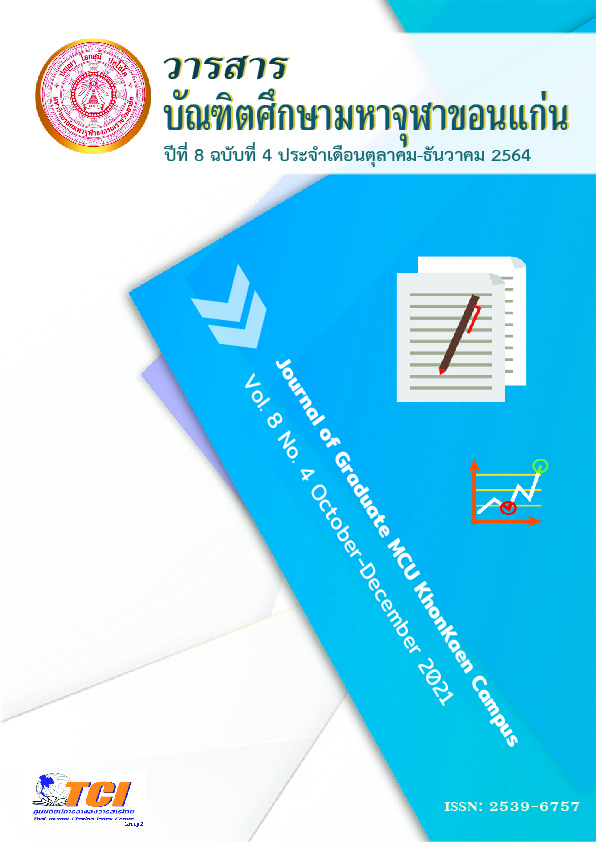THE RELATIONSHIP BETWEEN BODY AND MIND
Main Article Content
Abstract
This academic article aims to present the relationship between the body and the mind. It is found that human life consists of five aggregates: corporeality, feelings, perception, mental formations, and consciousness, in summary, namely the concrete and the abstract (Vedana, contract, sankhara, and Vinnayana). And the work of the mind has a body as a ready-made device that responds to commands. Body and mind are inextricably linked; for example, if the body is ill, it will have an impact on the mind.And on the other hand, if the mind is sick, it will affect the nervous system of the body.
Article Details
References
มหาวิทยาลัยมหาจุฬาลงกรณราชวิทยาลัย. (2539). พระไตรปิฎกภาษาไทย ฉบับมหาจุฬาลงกรณราชวิทยาลัย. กรุงเทพมหานคร: โรงพิมพ์มหาจุฬาลงกรณราชวิทยาลัย.
ประเวศ วสี. (2553). ธรรมชาติของสรรพสิ่ง : การเข้าถึงความจริงทั้งหมด. นนทบุรี: สำนักพิมพ์ กรีน ปัญญาญาณ.
พุทธทาส (ภิกขุ). (2541). คู่มือมนุษย์ฉบับสมบูรณ์. (พิมพ์ครั้งที่ 3). กรุงเทพมหานคร: สำนักพิมพ์ สุขภาพใจ.
ริค แฮนสัน และ ริชาร์ด เมนดิอัส (ณัช สยามวาลา, แปล). (2561). สมองแห่งพุทธะ (Buddha’s Brain. The Practical Neuroscience Of Happiness, Love & Wisdom. (พิมพ์ครั้งที่ 12). นนบุรี: อัมรินทร์บุ๊คเซ็นเตอร์.
วิกิพีเดีย สารานุกรมเสรี. (2562). สมอง. สืบค้นเมื่อ 5 พฤศจิกายน 2562, จาก https://th.wikipedia.org/wiki/Brain.
สมเด็จพระพุทธโฆษาจารย์ (ป.อ.ปยุตฺโต). (2562). พุทธธรรม ฉบับปรับขยาย พิมพ์ครั้งที่ 53 (ฉบับข้อมูลคอมพิวเตอร์ครั้งที่ 22. ม.เอเชียอาคเนย์, แทรกเสริม-เพิ่ม ภาพรวม).
สมเด็จพระพุทธโฆษาจารย์ (ป.อ.ปยุตโต). (2559). พจนานุกรมพุทธศาสตร์ ฉบับประมวลธรรม. (พิมพ์ครั้งที่ 34). กรุงเทพมหานคร: สำนักพิมพ์พระพุทธศาสนาของธรรมสภา.
อริยา คูหา. (2552). กาย จิต : ความสมบูรณ์แห่งชีวิต. วารสารรูสมิแล, 30(2), 47-49.
Judith A. Neal. (1997). Spirituality in Management Education : A Guide to Resources. Journal of Management Education, 21(1), 121-139.

